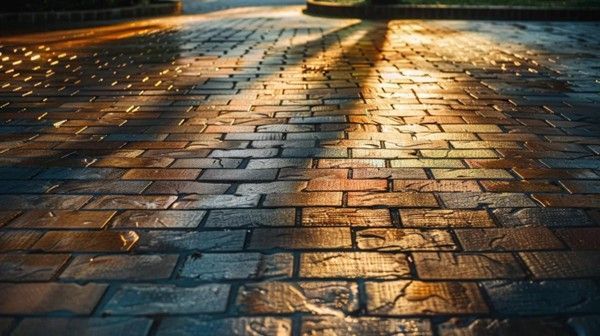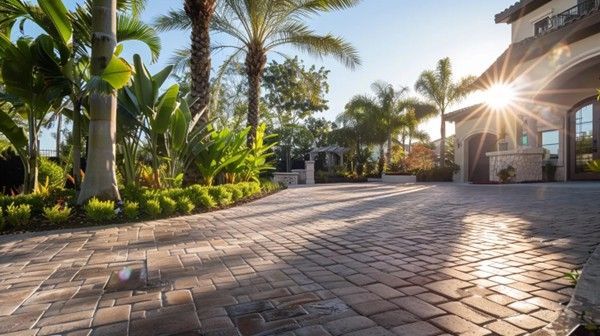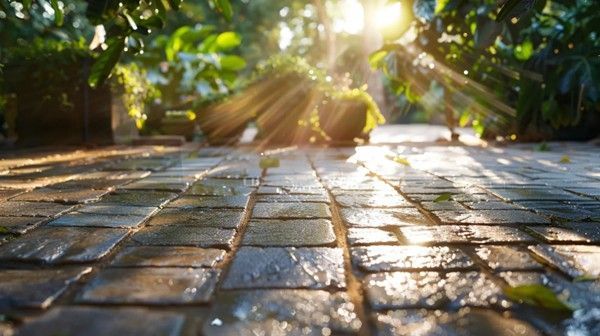10 Essential Tips for Maintaining Sealed Pavers to Enhance Lifespan and Aesthetic Appeal
Are your sealed pavers losing their shine? Regular maintenance can prevent dust accumulation, stains, and damage, ensuring your outdoor surfaces look great for years to come. In this article, readers will discover essential tips on cleaning routines, identifying repair needs, and the importance of reapplying sealant.
By following these guidelines, homeowners can enhance the lifespan and aesthetic appeal of their pavers, addressing common issues like stains and wear. Engaging with this content will empower readers to maintain their investments and enjoy beautiful outdoor spaces.
Key Takeaways
- Regular maintenance of sealed pavers increases longevity and reduces future repair costs
- Using the right cleaning solutions protects pavers and maintains their visual appeal
- Homeowners should inspect sealed pavers for damage and reseal as needed for optimal protection
- Effective water drainage prevents moisture-related issues and enhances paver integrity
- Seasonal preparation and upkeep are essential for preserving pavers during winter conditions
Understanding the Benefits of Maintaining Sealed Pavers

Maintaining sealed pavers brings several advantages, starting with enhanced longevity by improving durability against wear from weather elements and foot traffic. Regular upkeep through paver sealing services also enhances the visual appeal of patios, keeping them free from mildew and organic matter that can detract from their beauty. Additionally, preventive maintenance can significantly reduce future repair costs, making it a smart investment for homeowners.
Recognizing Enhanced Longevity
Sealed pavers significantly benefit from enhanced longevity, which is crucial for homeowners looking to protect their investment. Using high-quality sealant at appropriate intervals can shield pavers from harsh weather and frequent foot traffic, ultimately extending their life. Customers should consider the frequency of maintenance to keep their lawns and paver surfaces looking immaculate and to prevent deterioration.
| Benefit | Description |
|---|---|
| Longevity | Sealed pavers resist wear and damage, enhancing their lifespan. |
| Visual Appeal | Maintaining sealed pavers keeps them attractive and clean. |
| Cost Efficiency | Regular maintenance reduces future repair costs. |
Appreciating Visual Appeal
Homeowners can greatly benefit from understanding the visual appeal of well-maintained sealed pavers. Regular upkeep, including the removal of algae and other organic matter, keeps these surfaces looking clean and vibrant. Without such maintenance, water damage and erosion can lead to unsightly stains and deterioration, diminishing the aesthetic value of outdoor spaces.
Reducing Future Repair Costs
Regular maintenance of sealed pavers plays a critical role in reducing future repair costs. By conducting routine inspections to identify issues such as dirt buildup and moss growth, homeowners can address problems before they escalate. This proactive approach not only preserves the integrity of the concrete but also helps avoid expensive repairs. Requesting a free quote from a paver sealing professional can guide homeowners in understanding the necessary maintenance work and associated costs, ensuring their investment remains in excellent condition for years to come.
Caring for sealed pavers keeps their beauty alive. Next, a regular cleaning routine will ensure they stay strong and inviting.
Establishing a Regular Cleaning Routine
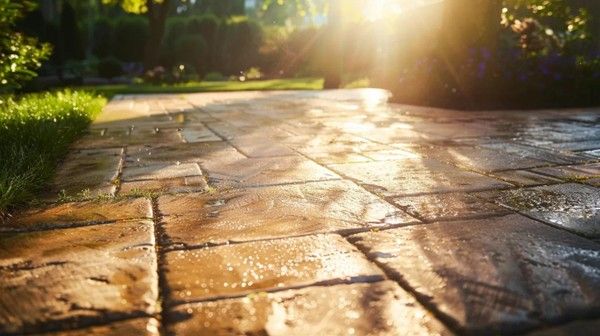
Regular cleaning of sealed pavers is vital for prolonging their lifespan and maintaining aesthetic appeal. This section discusses effective techniques such as sweeping and removing debris, choosing suitable cleaning solutions, and timing cleaning activities according to humidity levels. By following these tips, homeowners can uphold the beauty of their pavers while ensuring customer satisfaction and taking pride in their outdoor spaces.
Sweeping and Removing Debris
Regularly sweeping and removing debris from sealed pavers is crucial for maintaining their overall health and appearance. Using a soft-bristled brush, homeowners can easily eliminate dirt, leaves, and mold that may accumulate on brick surfaces. This proactive approach not only helps maintain the landscape's visual appeal but also prevents the growth of harmful organisms, ensuring the longevity of the pavers.
| Action | Description |
|---|---|
| Sweeping | Use a soft-bristled brush to remove dirt and debris. |
| Removing Debris | Clear leaves and twigs to avoid mold growth on brick surfaces. |
| Pressure Washing | Consider pressure washing for tough stains, but use with caution. |
Selecting Appropriate Cleaning Solutions
Selecting appropriate cleaning solutions for sealed pavers is essential in preventing wear and tear while maintaining the beauty of walkways. Homeowners should opt for environmentally friendly products that effectively remove debris without harming the sealed surface. For instance, using a gentle pH-neutral cleaner ensures that the pavers remain protected while still achieving a thorough clean, enhancing their durability and aesthetic appeal over time.
Timing Your Cleaning Activities
Timing plays a crucial role in maintaining sealed pavers for optimal performance and appearance. Based on the climate, homeowners should aim to clean their driveway and hardscape surfaces during cooler hours, such as early morning or late afternoon, to prevent rapid evaporation of cleaning solutions. This approach not only protects the integrity of the sealant but also ensures that the beauty of the pavers is preserved, prolonging the effectiveness of the protective coat while minimizing potential damage from excessive heat or sun exposure.
Regular cleaning keeps pavers looking sharp and extends their life. Yet, without the right care, they can still suffer damage and lose their shine.
Preventing Damage to Sealed Pavers
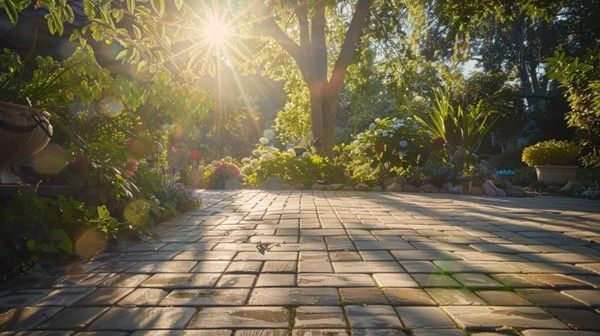
To ensure the longevity and beauty of sealed pavers, it is essential to focus on preventing damage caused by various factors. Protecting against stains and spills is crucial, especially from substances like sand and snow. Homeowners should also avoid placing heavy weights on surfaces to prevent impact damage. Additionally, effective water drainage management is vital in stopping issues like efflorescence and maintaining the integrity of the deck.
Protecting Against Stains and Spills
Protecting sealed pavers from stains and spills is vital for preserving their original look and extending their lifespan. Homeowners should quickly clean up any substances, such as oil or paint, as these can penetrate the sealant and cause lasting damage.
Using mats or pads in high-traffic areas can also provide an additional layer of protection, reducing the risk of unsightly marks and helping maintain the aesthetic appeal of outdoor spaces.
Avoiding Heavy Weights or Impact
Avoiding heavy weights or impact on sealed pavers is essential for maintaining their integrity and appearance. Homeowners should be mindful when parking vehicles or placing heavy furniture on these surfaces, as excessive weight can lead to cracking or shifting.
Additionally, using protective mats or platforms for items that may impose heavy loads can significantly enhance the lifespan of sealed pavers, ensuring they remain a beautiful feature of outdoor spaces.
Managing Water Drainage Effectively
Managing water drainage effectively is crucial in preserving the integrity of sealed pavers. Homeowners should ensure that gutters and downspouts direct water away from paved areas to prevent pooling, which can lead to erosion and surface damage.
Regular checks can help maintain proper slope and drainage pathways, safeguarding the pavers from moisture-related issues:
- Ensure gutters and downspouts direct water away from paved areas.
- Regularly check for standing water that may cause erosion.
- Maintain proper slope and drainage pathways to direct water effectively.
Even with proper care, sealed pavers can face wear and tear. Inspecting them regularly ensures any issues can be caught early, paving the way for simple repairs and lasting beauty.
Inspecting and Repairing Sealed Pavers
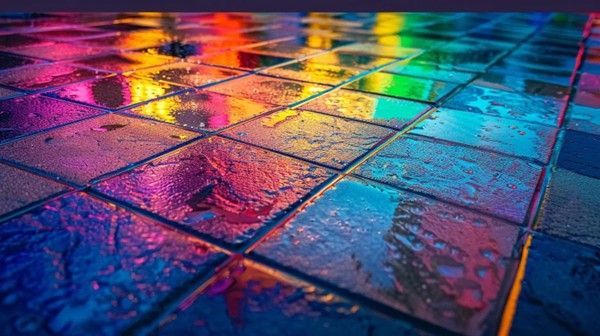
Regular inspection and repair of sealed pavers are vital for maintaining their longevity and appearance. Homeowners should focus on identifying surface wear, promptly addressing any cracks or chips, and assessing the condition of the sealant. These actions not only help preserve the pavers but also ensure that they continue to enhance the aesthetics of outdoor spaces.
Identifying Surface Wear
Identifying surface wear on sealed pavers is an essential step in maintaining their condition and extending their lifespan. Homeowners should regularly inspect their pavers for signs of chipping, cracking, or discoloration, as these indicators can signal underlying issues that require prompt attention.
By addressing surface wear early, homeowners can prevent more extensive damage and costly repairs in the future:
- Conduct regular inspections to spot any visible wear or damage.
- Look for cracks and chips that may develop over time.
- Monitor color changes that could indicate wear in the sealant.
Addressing Cracks or Chips Immediately
Addressing cracks or chips in sealed pavers promptly is crucial for maintaining their integrity and appearance. Homeowners should inspect their pavers regularly and treat any signs of damage immediately, as delays can lead to more extensive repairs and higher costs.
By using appropriate fillers or sealants, they can effectively prevent water infiltration and further degradation, ensuring that their outdoor spaces remain attractive and well-maintained for years to come.
Assessing the Condition of the Sealant
Assessing the condition of the sealant on pavers is a crucial step in maintaining their integrity and appearance. Homeowners should regularly check for signs of wear, such as discoloration or peeling, which indicate that the sealant may need reapplication.
A proactive evaluation helps ensure that the pavers remain protected from moisture and stains, preserving the aesthetic appeal and longevity of outdoor spaces:
| Condition Indicator | Action Required |
|---|---|
| Discoloration | Consider reapplying sealant to restore appearance. |
| Peeling Sealant | Remove old sealant and reapply a fresh coat. |
| Worn Areas | Inspect paver surface and reseal as needed. |
After the inspection, it became clear that even the best sealants need a touch-up. To keep the pavers strong and beautiful, it's time to consider reapplying the sealant for optimal protection.
Reapplying Sealant for Optimal Protection
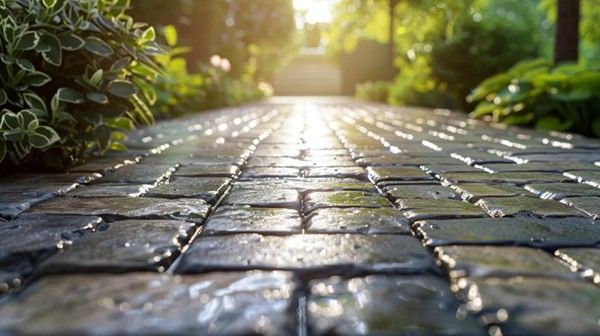
Reapplying sealant is a critical step in maintaining sealed pavers effectively. Homeowners need to determine the right sealant type for their specific paver material to ensure optimal protection. Understanding the recommended frequency for resealing helps preserve the integrity of the surface, while timing the resealing process according to environmental conditions can enhance the sealant’s effectiveness. These considerations are essential for achieving long-lasting and visually appealing outdoor spaces.
Determining the Right Sealant Type
Choosing the right sealant type is crucial for maximizing the effectiveness of paver maintenance. Homeowners should consider the specific material of their pavers, as different sealants are designed for concrete, brick, or natural stone.
Selecting a high-quality product that matches the paver's composition will ensure proper adhesion and optimal protection against stains, moisture, and weather damage, ultimately extending the lifespan while preserving aesthetic appeal.
Understanding the Recommended Frequency
Understanding the recommended frequency for reapplying sealant is essential for homeowners who want to protect their pavers effectively. Typically, resealing should occur every one to three years, depending on factors like weather conditions, foot traffic, and the type of sealant used. Ensuring a timely reapplication helps maintain the pavers' durability and visual appeal, preventing issues such as moisture infiltration and fading that could compromise the investment in outdoor spaces.
Timing the Resealing Process
Timing the resealing process for sealed pavers is crucial for ensuring they remain protected and visually appealing. Homeowners typically benefit from resealing every one to three years, with the timing influenced by environmental conditions and the type of sealer employed. For optimal results, it is best to schedule resealing during mild weather, avoiding extreme heat or rain, as this allows the sealant to cure properly and provides enhanced protection against stains and weather damage.
Reapplying sealant brings beauty and strength back to your pavers, but it does not end there. Seasonal maintenance can ensure that their new shine lasts, protecting your investment against time and the elements.
Employing Seasonal Maintenance Strategies
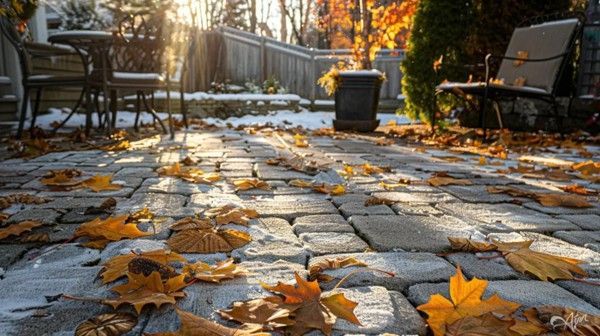
Seasonal maintenance strategies are essential for preserving sealed pavers. Preparing pavers for winter conditions helps prevent damage from freezing temperatures. Managing seasonal debris accumulation, such as leaves and snow, keeps surfaces clean and safe. Adapting care for different climates ensures that homeowners can meet the specific needs of their pavers year-round, enhancing both lifespan and aesthetic appeal.
Preparing Pavers for Winter Conditions
Preparing pavers for winter conditions is vital for maintaining their integrity and appearance. Homeowners should focus on removing debris and leaves that can trap moisture, leading to potential damage from freezing temperatures. Applying a protective sealant before the winter season can also safeguard against winter elements, ensuring that pavers remain durable and visually appealing.
| Winter Preparation Action | Description |
|---|---|
| Clear Debris | Remove leaves and debris to prevent moisture buildup. |
| Inspect for Damage | Check for existing cracks and chips that may worsen. |
| Apply Sealant | Use a protective sealant to guard against winter elements. |
Managing Seasonal Debris Accumulation
Managing seasonal debris accumulation is vital for maintaining the integrity and appearance of sealed pavers. Homeowners should regularly clear fallen leaves, branches, and other debris to prevent moisture retention, which can lead to mold growth and surface damage. Implementing a routine cleaning schedule, especially during fall and spring, can significantly enhance not only the aesthetics but also the longevity of paver surfaces by minimizing the risk of moisture-related issues:
| Action | Description |
|---|---|
| Clear Leaves | Remove leaves promptly to prevent moisture buildup. |
| Regular Sweeping | Use a broom to keep surfaces free of dirt and debris. |
| Inspect for Debris | Check for accumulated debris that could trap water. |
Adapting Care for Different Climates
Adapting care for sealed pavers according to different climates is crucial to maintaining their longevity and appearance. For instance, in areas with heavy rainfall, homeowners should focus on managing water drainage to prevent erosion and standing water. Conversely, in dryer climates, regular cleaning to remove dust and debris is essential to protect the pavers from moisture-related issues:
- Assess drainage solutions in wet climates.
- Prioritize dust control in arid regions.
- Schedule seasonal cleaning based on local weather patterns.
As seasons change, questions often arise about protecting investment in pavers. Let’s explore common concerns to ensure those sealed surfaces remain strong and vibrant.
Frequently Asked Questions About Sealed Paver Maintenance
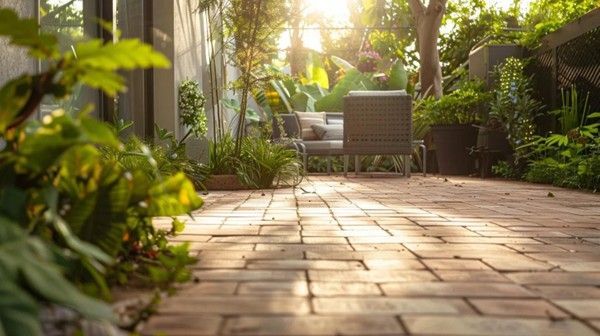
This section addresses common inquiries homeowners have regarding sealed paver maintenance. It covers essential topics such as how frequently to clean sealed pavers, what products are safe to use, and whether sealing can be done independently. Additionally, it provides insight into safely removing stains and recognizing signs that indicate resealing is needed, all aimed at preserving the beauty and longevity of outdoor spaces.
How Frequently Should I Clean My Sealed Pavers?
Homeowners should aim to clean their sealed pavers at least once every three to six months, depending on their environment and usage. For areas with heavy foot traffic or exposure to rainfall, more frequent cleaning may be beneficial to prevent dirt, algae, and debris buildup. Regular cleaning helps maintain the aesthetic appeal of the pavers while enhancing their longevity and protecting against potential damage.
| Cleaning Frequency | Condition | Recommended Action |
|---|---|---|
| Every 3 months | High foot traffic or wet environment | Thorough cleaning |
| Every 6 months | Moderate use | Standard cleaning |
| Annually | Low foot traffic | Basic maintenance cleaning |
What Products Are Safe to Use on Sealed Pavers?
When maintaining sealed pavers, homeowners should opt for pH-neutral cleaning solutions that are specifically designed for use on sealed surfaces. These gentle products effectively remove dirt and stains without damaging the sealant, ensuring the pavers retain their beauty and protective layer. Furthermore, it is advisable to avoid harsh chemicals or abrasive materials, as these can compromise the sealant's integrity and reduce the lifespan of the pavers.
Can I Seal My Pavers Myself?
Homeowners often wonder if they can seal their pavers themselves. While it is possible to complete this task independently, it is essential to follow the correct procedures to ensure effective sealing. Using the right sealant for the specific type of pavers and applying it evenly are crucial steps in maintaining the integrity and appearance of the surface.
| Aspect | Considerations |
|---|---|
| Sealant Type | Choose a sealant compatible with your paver material. |
| Application Technique | Apply sealant evenly to avoid streaks and pooling. |
| Environmental Conditions | Seal during suitable weather to allow proper curing. |
How Do I Safely Remove Stains From Sealed Pavers?
To safely remove stains from sealed pavers, homeowners should start by blotting the stain with a clean, absorbent cloth to avoid spreading it. Following this, they can use a pH-neutral cleaner and a soft-bristled brush, gently scrubbing the affected area to lift the stain without damaging the sealant. For tougher stains, such as oil or paint, quickly addressing them with an appropriate stain remover designed for sealed surfaces will help maintain the pavers' beauty and integrity.
What Signs Indicate That Resealing Is Needed?
Homeowners should be vigilant for several signs that indicate it may be time to reseal their pavers. Notable changes such as discoloration, a dull surface, or visible cracks can all signal that the sealant is wearing off and may no longer be providing adequate protection. Additionally, if stains from oil or other substances penetrate the surface easily, it is a clear indication that resealing is needed to restore the barrier and ensure the longevity and aesthetic appeal of the pavers.
Conclusion
Maintaining sealed pavers is crucial for extending their lifespan and enhancing their visual appeal. Homeowners can achieve this by implementing regular cleaning, using appropriate sealants, and addressing issues promptly. Proactive measures, such as managing water drainage and protecting against stains, significantly reduce future repair costs. By following these essential tips, homeowners will ensure their outdoor spaces remain attractive and well-preserved for years to come.


